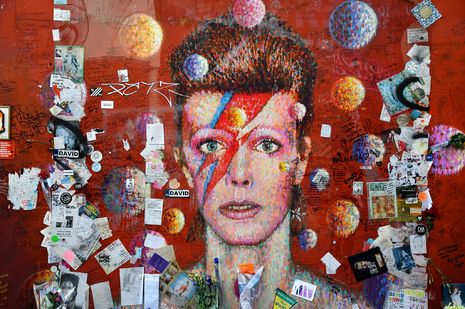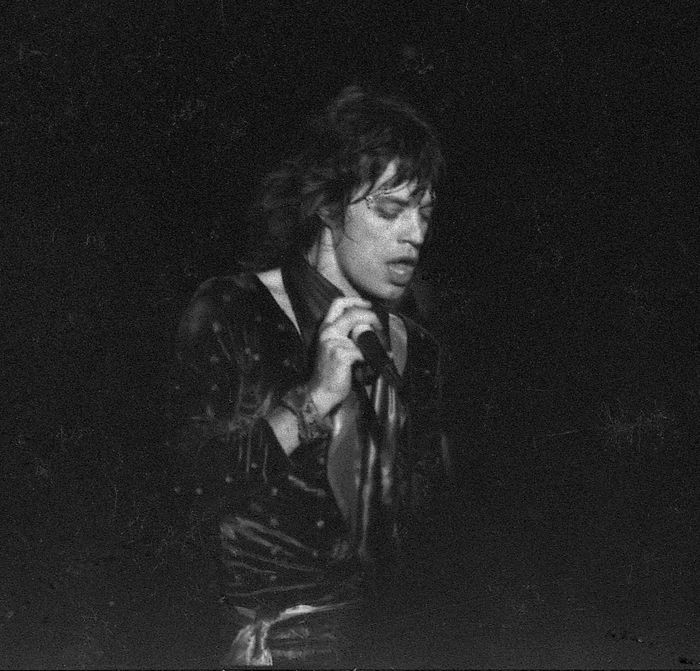“Five Years”? More like fifty: Looking back on Ziggy Stardust
Looking back at David Bowie’s iconic fifth album, Columnist Daniel Starkey comments the lasting impact of Bowie’s music and style

For fans of 70s music like myself, the next few years are a veritable treasure trove of golden anniversaries in music: the likes of Led Zeppelin, Queen, Pink Floyd and many more all have great and iconic albums that will soon be celebrating their 50th birthdays. Such events provide us with a great opportunity to take another look at these projects and consider what makes them so great. What do they mean to us years later? And where can we place them in the broader history of music?
“While it might be described as a glam rock album, it’s really much more than that”
This month, upon us falls the 50th anniversary of David Bowie’s fifth studio album, The Rise and Fall of Ziggy Stardust and the Spiders From Mars (a bit of a mouthful, which is why we often refer to it simply as Ziggy Stardust). Released on 16 June 1972, its opening track, “Five Years”, certainly falls hopelessly short of capturing the time that has elapsed since then. While it might be described as a glam rock album, it’s really much more than that. For one, songs like “Five Years”, “Moonage Daydream”, and “Starman” make deft use of orchestral arrangement to carry the album beyond a grounded rock sound into one of mystery and wonder, reflecting the album’s broader concept of a mysterious alien rock star sent to save the Earth from catastrophe.
The project boasts a great variety, ranging from the bombastic “Suffragette City” and the funky “Hang On to Yourself” to the more thoughtful “Lady Stardust” (an ode to Bowie’s fellow glam rock star, Marc Bolan). One of the greatest strengths of the concept album format is the ability to use an idea as a foundation upon which to experiment with different styles. Bowie’s album takes advantage of this most evidently through his lyrics and sound. The songs’ lyrics, often pretty nonsensical, (“You’re squawking like a pink monkey bird” particularly comes to mind), become more coherent once viewed through the lens of the album’s theme, conveying a description of the Ziggy character’s cosmic nature and outrageous mystique while chronicling his adventures on Earth. Simultaneously, the ever-present acoustic guitar makes it feel as if Ziggy is constantly with us, “jamming with Weird and Gilly and the Spiders from Mars”.
No track feels out of place as each one brings a unique blend of instrumentation. While some tracks are gentle in sound (“Soul Love”), and others much heavier and full-on (“Suffragette City”), they are all highly enjoyable and satisfying to listen to. And, of course, Bowie’s vocals are unmistakable, blazing with energy and emotion, particularly in “Five Years” and the closing track, “Rock and Roll Suicide”, which unsubtly concludes the album in a grand fashion with a set piece that feels like it’s straight out of the finale of a symphony.
The album’s visual art, an important feature that can often be overlooked (and is sadly largely lost in the age of digital music), lifts this project to even greater heights. Being, in many cases, your first point of connection with the album, it captures the imagination that accompanies the listening experience. In this case, the album cover’s simultaneous vibrance and gloom, featuring the lone figure of Ziggy Stardust himself, gives an air of mystery, adding great character to the overall work.
“This album could have easily been released fifty days ago”
For the 25-year-old Bowie, this album marked one of his biggest artistic turning points; with Ziggy, he transitioned from his more folk-and pop-rock-oriented early days to heavier styles and greater experimentation in both music and fashion, leading to albums like 1977’s Heroes, and 1980’s Scary Monsters (and Super Creeps). More broadly, the album formed an integral part of the glam rock catalogue of the early 1970s, which helped pave the way for the emergence of new wave in the early 1980s, for which elaborate fashion also formed an important part. Songs like “Suffragette City”, with its fast, heavy sound and intense energy, have also been counted among forerunners to punk music.
Fifty years on, the album feels as fresh and exciting as ever; its palpable energy and distinctive character keeps its artistic force very much alive. Listening to it never gets dull and something different stands out every time you hear it. With its simple and timeless instrumentation, this album could have easily been released fifty days ago. It sounds and feels in almost no way dated, unlike some music from later in the decade (looking at you, new wave). Many of the songs continue to feature in popular visual media, such as the ingenious use of “Moonage Daydream” in Guardians of the Galaxy. And, of course, Ziggy Stardust remains one of the most iconic personae in music. Ziggy Stardust is Bowie at his finest and most influential, and is rightly counted among the greatest albums of all.
 News / Cambridge academics stand out in King’s 2026 Honours List2 January 2026
News / Cambridge academics stand out in King’s 2026 Honours List2 January 2026 Interviews / You don’t need to peak at Cambridge, says Robin Harding31 December 2025
Interviews / You don’t need to peak at Cambridge, says Robin Harding31 December 2025 Comment / What happened to men at Cambridge?31 December 2025
Comment / What happened to men at Cambridge?31 December 2025 News / Varsity’s biggest stories of 202531 December 2025
News / Varsity’s biggest stories of 202531 December 2025 Features / “It’s a momentary expression of rage”: reforming democracy from Cambridge4 January 2026
Features / “It’s a momentary expression of rage”: reforming democracy from Cambridge4 January 2026











